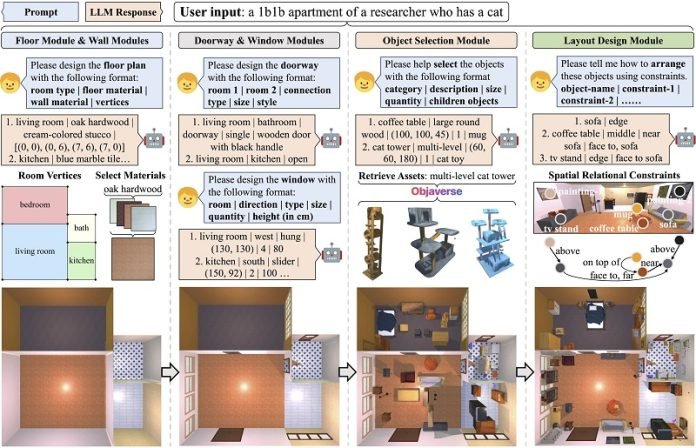
In the famous TV show “Star Trek: The Next Generation,” there’s a magical room called the Holodeck.
People walk in, ask for any place they can imagine, like a jungle or Sherlock Holmes’ London, and it appears around them.
It’s like stepping into a different world without leaving the ship. Now, imagine if we could do something like that in real life.
Well, some smart folks at the University of Pennsylvania and their friends at other universities are working on it, and they’re calling it “Holodeck” too!
Their version of Holodeck doesn’t make a jungle pop up around you, but it does create incredibly detailed and interactive 3D spaces inside a computer.
These aren’t just for fun, though. They’re designed to help robots learn how to navigate different environments, like homes, offices, or malls, before they ever roll or walk into the real thing.
It’s a bit like how pilots use flight simulators before flying a real plane.
Creating these virtual worlds has always been a big task. Normally, artists have to design every little detail, which can take a whole week just for one setting.
This is where the Holodeck team’s work changes the game. They use AI, the same kind of technology behind ChatGPT and those programs that generate pictures from text, to build these environments much faster and without needing an artist for every step.
The team’s Holodeck can understand plain English requests. So, if you tell it you need a cozy apartment scene for a robot to learn how to navigate around pet toys and furniture, Holodeck gets to work. First, it sketches out the basic layout – walls, floors, doors, and windows.
Then, it picks furniture and other items from a huge digital library to fill the space.
It even makes sure everything is placed where it makes sense, so you don’t end up with a sofa hanging off a wall!
When they tested Holodeck, the creators asked a bunch of engineering students which scenes they liked better: ones made by Holodeck or ones made by another tool.
The students consistently preferred Holodeck’s creations for looking more real and making more sense.
The team also showed that robots trained with these Holodeck environments do a better job navigating new places they’ve never seen before.
For example, a robot was much better at finding a piano in a music room after practicing in similar rooms created by Holodeck than in ones made by other methods.
This breakthrough is not just cool because it’s like something out of “Star Trek.” It could really help get robots out of labs and into the real world, doing helpful things in places they’ve never been, safely and efficiently.
The researchers are excited to share more about their work at a big technology conference in Seattle this June. They believe Holodeck could change how we prepare robots for the real world, making them smarter and more capable than ever before.



